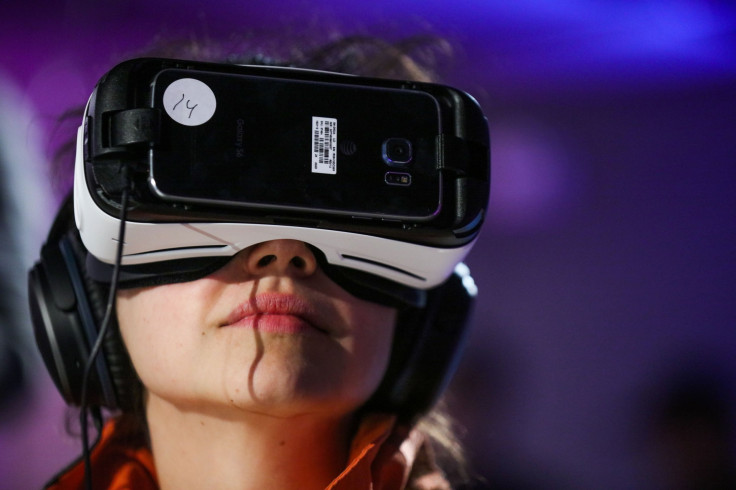LA’s Getty Center Blends Oculus-Ready VR With Ancient Chinese Art In Virtual Reality Museum Exhibit

LOS ANGELES — Plenty of young people go to museums. But too many of them come involuntarily as part of school trips, and their body language often shows it. They’d much rather be at home playing video games.
But what if there’s a way to do both? The Getty Center, an art museum on a West Los Angeles hilltop, is opening a new exhibit this weekend that combines virtual reality with ancient Chinese cave paintings to create an experience that allows users to look around and learn — and it’s a heck of a lot more fun than staring at a painting on the wall.
The Getty exhibit, which opens Saturday, highlights the ornately decorated Dunhuang Caves in the Gobi Desert of western China, which date from the 6th century and are a Unesco World Heritage Site. Items from the original caves are displayed in the museum’s galleries, and the interiors of three of the caves have been recreated by artisans in China on paper and wood and set up as full-scale replicas in a free standing building at the museum.
“Bringing this significant exhibition here provides a rare opportunity for people in the U.S. to experience the beauty and history of this remote artistic site in China,” said Emily Wang, director of marketing and community development at East West Bank, the exhibit’s lead corporate sponsor.

But there’s also an immersive virtual reality experience, which is new for Getty. Visitors first watch a montage of nature scenes from the caves projected on large screens before putting on 3D glasses and going into a separate room where the cave is rendered in lifelike size and detail. There, a narrator highlights and explains individual elements, as International Business Times observed on a visit to the museum this week.
Garson Yu, founder of Yu + Co., which specializes in motion graphics for TV and movies, spent about two years developing the immersive experience. Yu’s team spent more than a year taking photos of the site, then texture-mapped them on a 3D framework to create the entire cave. The show is displayed on a curved screen in a roughly circular space, which had to be a particular size to give the experience the proper scale.
But interestingly — especially for those who can’t make it to the Getty before the exhibit closes in September — Yu said the virtual tour is Oculus-ready, meaning it’s compatible with the Oculus virtual reality system used in headset devices like Facebook’s Oculus Rift and Samsung’s Gear VR. And while there’s no immediate plan to distribute the experience outside of the Getty, Yu said he certainly envisions it eventually being made available for VR users far from California. And they can watch it in whatever room they want.
“Everyone can experience it,” Yu said, “even if you can’t come to the Getty in L.A.”
Thomas Gaehtgens, an art historian and director of the Getty Research Institute, told IBT the virtual experience really does re-create the sense of scale and beauty that visitors get when seeing the actual caves in China.
“It is astonishing and particularly exciting to experience the virtual cave,” Gaehtgens said. “Modern technology gets you inside, gives you the feeling of scale, and by walking around considering the wall paintings at leisure allows to contemplate the dense spirituality of this outstanding sacred location.”
Still, there’s no substitute for the real thing, and Yu and others at the Getty said they hope that exploring the caves virtually from a remote place would motivate people to want to see them for real. Indeed, other museum visitors who previewed the experience were even more excited to see the replica caves when it was done; and after seeing the replica caves, some were asking about the best way to fly from L.A. to Dunhuang.
© Copyright IBTimes 2024. All rights reserved.





















